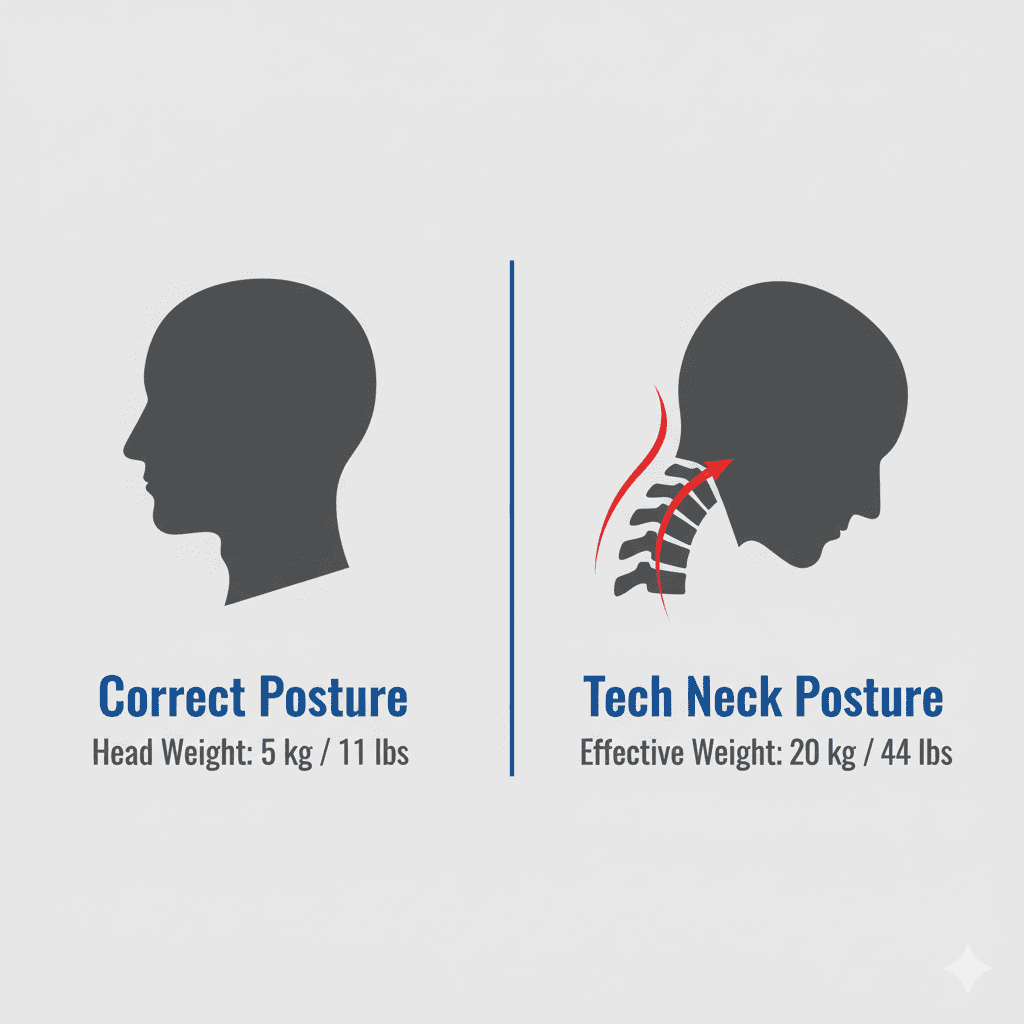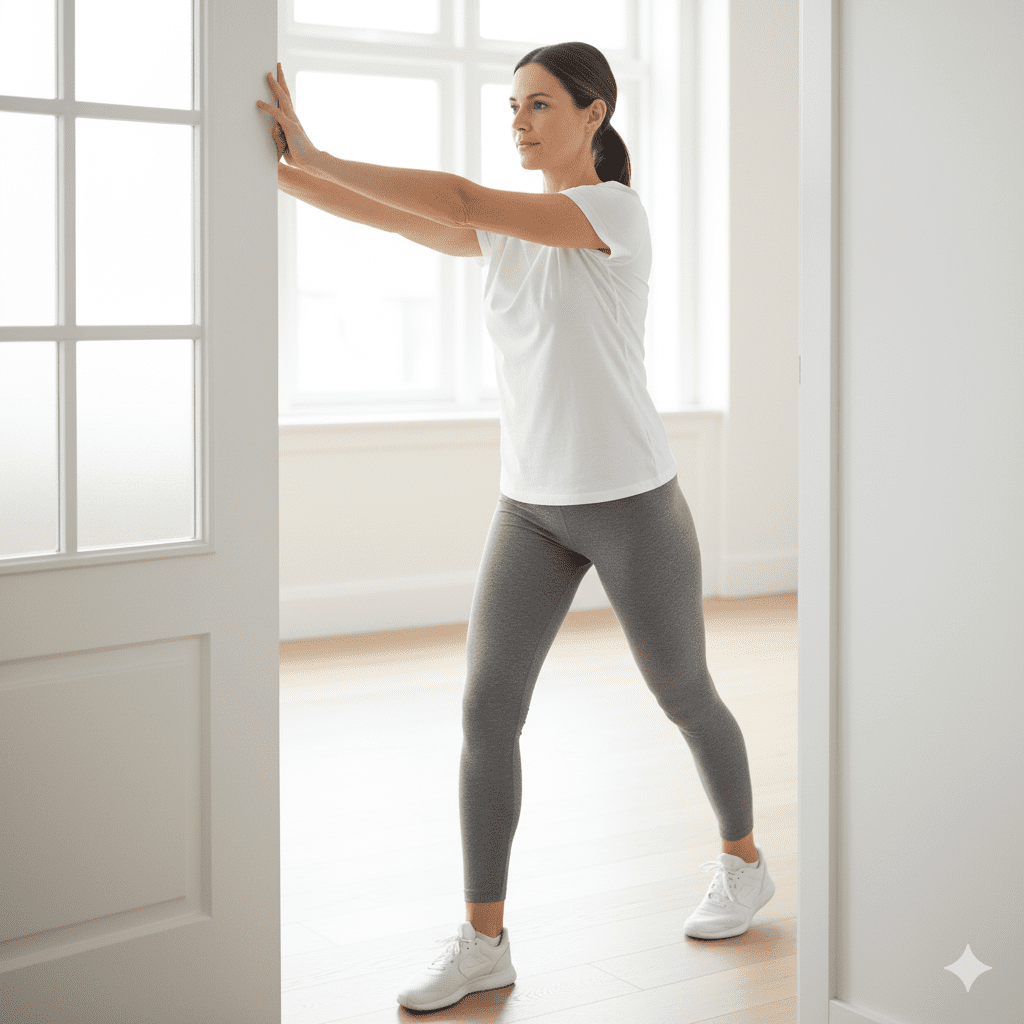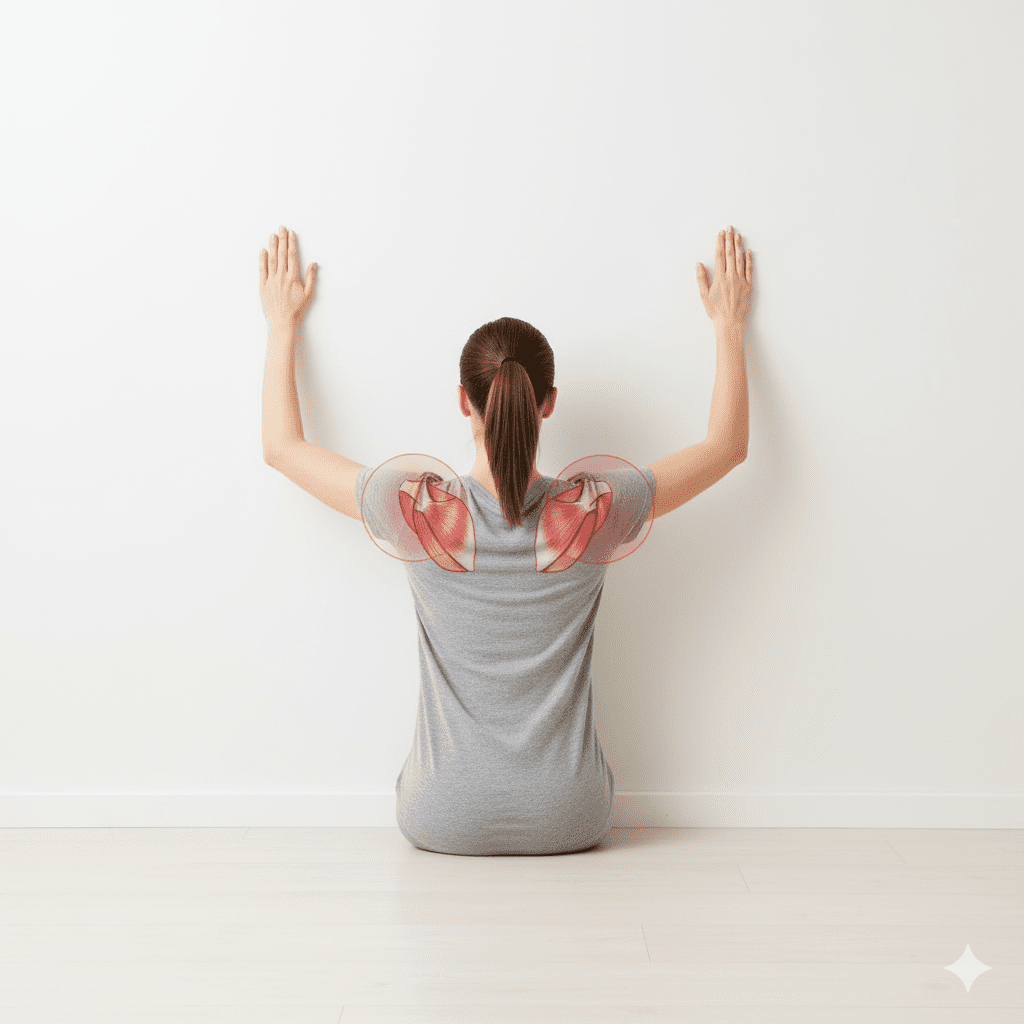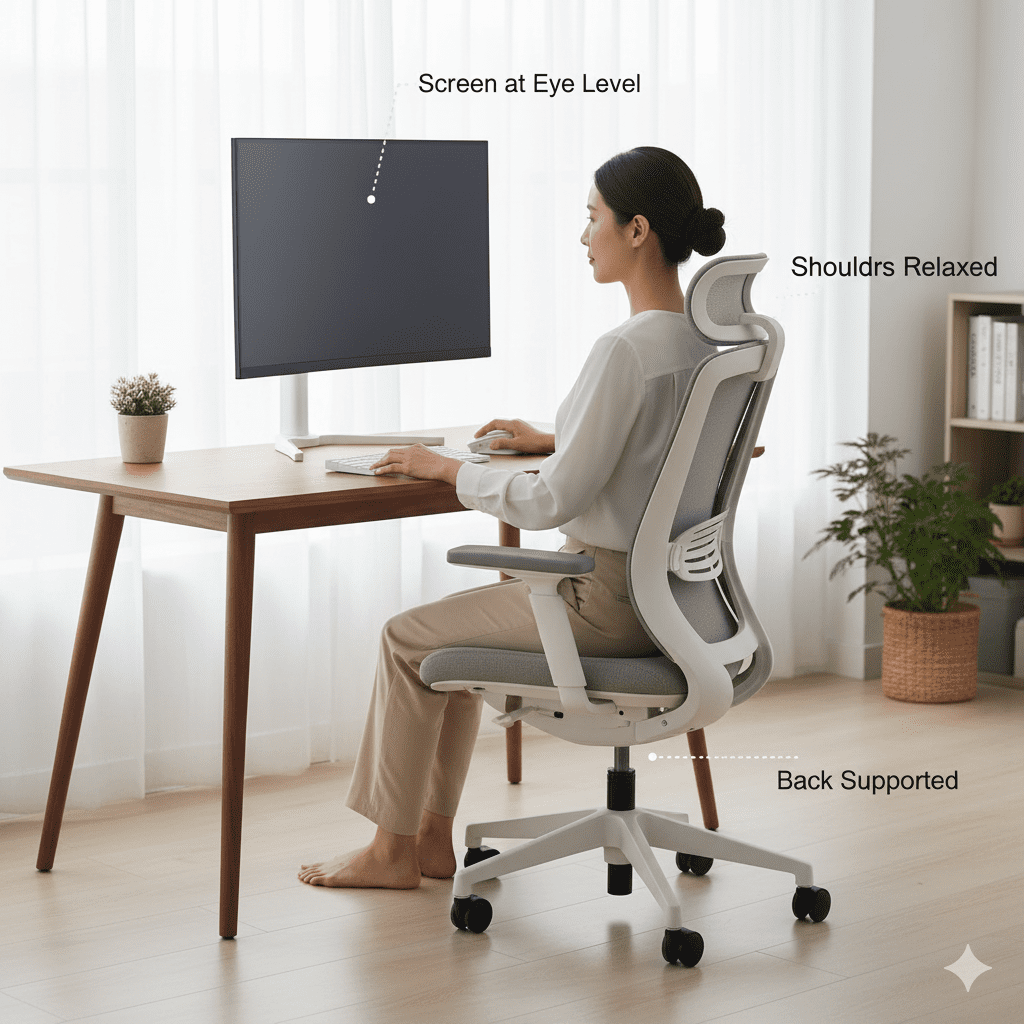
Look down at your phone, then back up.
Feel that little crick in your neck? That subtle ache?
Now, multiply that sensation by eight hours a day, five days a week, fifty-two weeks a year.
Welcome to “Tech Neck,” the official, unofficial posture of the 21st century.
If you’re reading this, you probably know the feeling all too well. It’s that nagging stiffness that never quite goes away, the tension headaches that creep in by mid-afternoon, and that persistent ache right between your shoulder blades.
You might even notice other sneaky side effects: jaw pain, rounded shoulders, or even a strange tingling sensation down your arms.
These aren’t random aches. They are the direct result of a posture problem that has become an epidemic in our digital world.
But here’s the good news: It’s not permanent. You are not destined for a life of pain.
We’re going to show you how to systematically fix tech neck using a powerful 3-step reset protocol: Release, Activate, and Re-educate. This isn’t a temporary fix; it’s a clear path to unwinding the damage and building a stronger, more resilient upper body for good.
The “Bowling Ball Effect”: Why Tech Neck is Wrecking Your Spine
To understand the solution, you first need to understand the incredible stress your neck is under.
Picture this: Your head weighs about as much as a bowling ball. We’re talking 5 kg or 11 lbs.
When your posture is perfect—ears aligned directly over your shoulders—your spine is happy. It’s designed to carry that weight effortlessly.
But the moment you tilt your head forward to look at a screen, the physics change dramatically.
For every single inch your head drifts forward, it effectively doubles the load on your neck and upper back muscles.
Let that sink in.
A 2-inch forward tilt? That’s like asking your neck to support 15 kg (33 lbs). A 3-inch forward tilt? That’s 20 kg (44 lbs). It’s like having a small child hanging off your neck all day long.
This constant, immense strain is what leads to muscle fatigue, inflammation, nerve irritation, and all the symptoms you’re feeling right now, from headaches from neck stiffness to that deep pain between shoulder blades from sitting.
This “wow” moment is often the first step for my patients in truly committing to forward head posture correction. They realize it’s not just about looking better; it’s about taking an impossible load off their body.

I vividly remember a time when my own mornings were filled with dread. The first thing I’d feel upon waking was a deep, throbbing ache at the base of my skull. One specific day, I caught my reflection in a shop window while walking to work—hunched over, head jutting forward—and I barely recognized myself. That was the turning point that led me to dive deep into the biomechanics of posture and discover the principles I’m about to share with you.
The 3-Step Posture Reset Protocol
Ready to begin the reset? We’ve broken it down into a simple, logical framework. You can’t just stretch and hope for the best. You need to release the tight muscles, activate the weak ones, and then retrain your brain.
Step 1: RELEASE The Prisoners (Muscles That Are Too Tight)

When your head moves forward, the muscles at the front of your body become chronically short and tight. They are the “prisoners” of your posture.
Think of your chest muscles (your pecs) and the small muscles at the front of your neck. They’ve been pulling your shoulders and head forward for years.
Stretching them first is non-negotiable. You can’t pull your shoulders back if your chest is acting like a locked door.
Our Go-To Release Exercise: The Doorway Pec Stretch
This is one of the most effective exercises for text neck because it directly counteracts the “hunching” motion.
- How to do it:
- Find an open doorway.
- Place your forearms on the frame of the door, with your elbows bent at a 90-degree angle (like a field goal post).
- Gently step one foot through the doorway until you feel a comfortable stretch across the front of your chest.
- Keep your chin gently tucked and your core engaged. Don’t arch your lower back.
- Breathe deeply into the stretch.
- Hold for 30-45 seconds. Repeat 2-3 times.
Why it works: This stretch physically lengthens the pectoral muscles, giving your shoulder blades the freedom they need to move back into their correct position. It’s the essential first step to creating space.
Step 2: ACTIVATE The Sleepers (Muscles That Are Too Weak)

Now that you’ve unlocked the front, it’s time to wake up the muscles in the back.
Your upper back muscles—specifically your rhomboids and lower trapezius—are the “sleepers.” They are supposed to act as the strong anchor for your posture, pulling your shoulders back and down.
But after years of being overstretched and underused, they’ve become weak and dormant. It’s time for their wake-up call.
Our 1 Activation Exercise: The “W” Wall Slide
This is the ultimate move for upper back stiffness relief and waking up those sleepy postural muscles.
- How to do it:
- Stand with your back against a wall, feet about six inches away from it.
- Try to keep your lower back, upper back, and head touching the wall (a slight curve in the low back is normal).
- Place your arms against the wall in a “W” shape—elbows bent, below shoulder height.
- Keeping your wrists and elbows in contact with the wall, slowly slide your arms up the wall.
- Go only as high as you can without your elbows or wrists peeling off the wall, or your back arching excessively.
- Slowly slide back down to the starting “W” position.
- Perform 10-12 slow, controlled repetitions.
The Golden Ticket for Forward Head Posture Correction: The Chin Tuck
If you do only one exercise from this guide, make it this one. The chin tuck directly strengthens the deep neck flexor muscles at the front of your neck—the muscles responsible for holding your head in the correct position.
- How to do it:
- Sit or stand tall, looking straight ahead.
- Gently draw your head straight back, as if you’re trying to make a double chin.
- Imagine a string pulling the crown of your head up towards the ceiling to keep you tall.
- You should feel a stretch at the back of your neck and an activation in the muscles at the front.
- Hold for 3-5 seconds. Release.
- Perform 10-15 repetitions.
This isn’t about looking down. It’s about a horizontal gliding motion, like a turtle pulling its head back into its shell.
Step 3: RE-EDUCATE Your Habits (Making It Stick)

Exercises are fantastic, but they can be undone if you immediately return to 8 hours of poor posture. This final step is all about retraining your daily habits and environment.
This is how to fix posture at a desk for the long term.
Actionable Tip 1: The Eye-Level Rule
Your head will always follow your eyes. If your screen is too low, your head will drift down and forward.
- The Fix: Adjust your monitor or laptop so that the top of the screen is at or slightly below your eye level. Use a monitor stand, a stack of books, or a separate keyboard and mouse for your laptop. This one change is a complete game-changer.
Actionable Tip 2: The “Micro-break” Rule
Consistency beats intensity every single time. You don’t need a 30-minute posture routine. You need 30 seconds of awareness, every 30 minutes.
- The Fix: Set a simple timer on your phone or computer to go off every 30 minutes. When it dings, do this:
- Stand up (if you can).
- Roll your shoulders back and down three times.
- Perform one perfect chin tuck.
- That’s it.
This simple habit breaks the cycle of static posture and constantly reminds your body where it’s supposed to be.
Your Actionable Checklist: The 2-Minute Desk Rescue
Feeling that stiffness creeping in right now? Stop reading and do this. Screenshot it. Write it on a sticky note. This is your immediate relief plan.
- Chin Tucks: 10 slow reps.
- Shoulder Blade Squeezes: 10 reps (pinch them together like you’re holding a pencil).
- Doorway Pec Stretch: 30-second hold.
- Look Up & Away: Look at a distant object for 30 seconds to relax your eyes.
Save this for your next work break!
Your Posture is Your Power
Fixing tech neck isn’t about achieving a perfect, rigid posture overnight.
It’s about consciousness and consistency. It’s about understanding that small, deliberate changes throughout your day are far more powerful than one grueling hour at the gym each week.
You are not broken. Your body is incredibly adaptable and has an amazing capacity to heal and rebuild.
You have the power to reverse your posture, end the chronic pain, and reclaim your energy, starting right now with a single chin tuck.
If you’re dealing with persistent pain, numbness, or headaches that just won’t quit, it might be time for a professional assessment. A small issue can become a major one if left untreated. We can provide a personalized ergonomic evaluation and a targeted treatment plan to address the root cause of your discomfort.
Visit physiogain.com to book your virtual or in-person session today. Your spine will thank you for it.